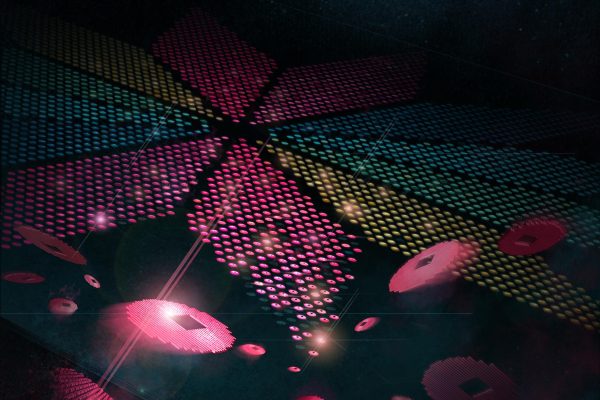
UBC Computer Science advances DNA molecular orientation
A UBC Computer Science professor emeritus and a former PhD graduate have collaborated with an international team of researchers to develop a technique to precisely place and orient folded DNA molecules on a flat surface.
Professor David Kirkpatrick and alumnus Chris Thachuk (now Assistant Professor at the University of Washington), have been instrumental in developing a shape for folded DNA which can land on and stick to a nanoscopically small patch etched on a surface, with a precise orientation.


The research paper called Absolute and arbitrary orientation of single-molecule shapes published on February 19 by the journal Science, builds on more than 15 years of work by Caltech's Paul Rothemund and his colleagues. In 2006, Rothemund showed that DNA could be directed to fold itself into precise shapes through a technique dubbed ‘DNA Origami.’
As initially developed, the triangular-shaped DNA Origami were free to rotate and flip upside-down in solution and, though precise in position (a triangular sticky patch), could terminate in any of six different orientations when binding to a flat surface, ruling out applications that require a unique orientation.
Thachuk called upon his colleague from UBC Computer Science, David Kirkpatrick for help. “David’s an expert in computational geometry,” Thachuk said. “We knew if we could just find the right shape, it could align itself. The solution, a disk with an off-centre hole, turned out to be remarkably simple.”
“It’s not hard to see how someone who eats bagels for breakfast most days might have this shape in mind,” laughed Kirkpatrick.
Initial research they conducted suggested that, unlike a variety of other proposed shapes that were considered, small moon shapes smoothly rotate to find the best alignment with their intended sticky patch, in both theory and simulation. Further lab experiments verified that over 98 per cent of the small moons found the correct orientation on their sticky patches.
As a proof-of-concept, the team arranged more than 3,000 glowing moon-shaped nanoscale molecular devices into a flower-shaped instrument more narrow than a human hair. Because each moon only glows when it’s struck by polarized light matching its orientation, the result is a flower whose petals light up in sequence as the polarization of light shined upon it is rotated.
“What this project really does is marry the best top-down nanoscale technology, which is the electron-beam lithography that we use to etch computer chips, with bottom-up self-assembly of DNA origami,” said Thachuk.
By precisely placing and orienting DNA-based molecular devices, these devices could power new kinds of computer chips that integrate molecular biosensors with optics and electronics for various applications like DNA sequencing or measuring the concentrations of thousands of proteins at once.
“The beautiful mathematical ideas translated into really important experimental results,” said Thachuk. “And I got to work with really amazing theoretical computer scientists like David, as well as brilliant experimentalists.”
Kirkpatrick added, “In fact, Chris played a really critical role, not only as a bridge between the two worlds, but also making fundamental contributions of both a theoretical and experimental nature.”
Both Kirkpatrick and Thachuk indicate there is more work to be done. “We're now thinking about following up on some of the abstract shape type questions we addressed in the work. It remains to be seen if they penetrate as far, in terms of actual implementation and application.”